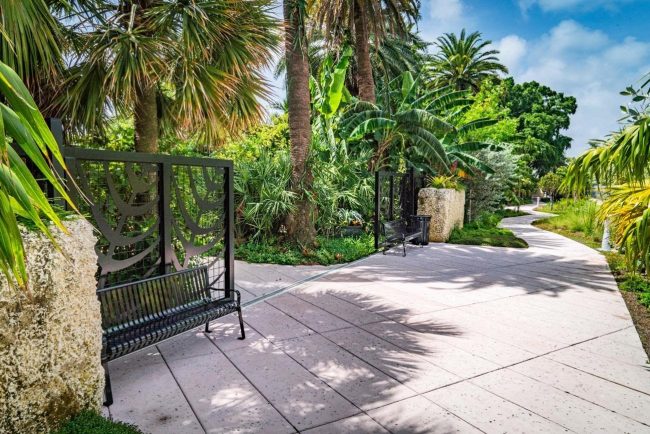The Collins Canal Walking Tour is the latest attraction at the Miami Beach Botanical Garden. It is a free, self-guided audio tour that visitors can use by dialing a phone number.
It consists of 25 stops at some of Miami Beach’s most important historical landmarks.
After almost a year in the making, the program was officially launched this past March 20. It reached around 200 people that day.
The initial program consisted of 13 stops inside the Botanical Garden. A new expansion launched last month added stops 14 to 25, extending outside the garden and along the Collins Canal.

The guide is available in five languages: English, Spanish, French, Italian and Portuguese.
Sandy Shapiro has worked in the Miami Beach Botanical Garden for over five years and is now the executive director. She said a tour around Central Park where they offered a similar program inspired her to take on this project.
The approximately one-mile-long walk serves as a connector across several cultural institutions of Miami Beach.
Some of the most significant landmarks people can walk by are the Holocaust Memorial and the Carl Fisher’s Clubhouse.
The guide takes you across Washington Avenue, past The Bass Museum, the Miami City Ballet and the Miami Beach Library. It eventually ends at the ocean.
Each 90-second stop provides background information, interesting facts and the history of the various sites.
“The guide highlights each particular area,” Shapiro said. “It becomes an attraction and a destination, filled with fun and historical information.”
Marty Mueller and Paula Fletcher are the authors of the tour and former board members of the botanical garden.
Mueller said the guide’s primary purpose is to offer visitors a more structured attraction that enhances their overall experience.
He said he was inspired to work on the project after learning from thousands of online reviews that many national and international visitors visited the city each year and struggled to find valuable experiences.
“Many just wander around and soak up the ambiance, which is a lovely thing to do,” Mueller said. “But many others want a richer experience with far more information and background.”
According to him, what makes the tour attractive is how accessible it is to the public. It has no cost, and there is no need for reservations, unlike other many other tours in the area.
Visitors who use the guide are also more likely to donate to the Garden when they believe they have received something valuable, Mueller added.
He said he expects the guide to bring life to the north side of the Garden, along the canal and into Collins Park.
Cecilia Acosta, 26, is a Miami resident who recently visited the garden. She said she had a great experience using the guide.
“I thought this tour was useful because you can go at your own pace, you don’t have to be with a big group, and the best part is it ends at the ocean,” Acosta said. “That was my favorite part.”
According to Shapiro, the city’s sustainability plan for sea-level rise aided the plan. It helped raise the sea wall and remove all of the existing trees. Shapiro then proposed the self-guided tour project to the city, intending to create a more exciting attraction than just space with a sidewalk.
“There was a lot of work involved in putting together this project,” Shapiro said.
She said finding the people to translate the scripts into other languages was one of the biggest challenges because she wanted to find voices that would sound engaging and entertaining.
The system offers detailed insight into the number of people who have listened to the guide, where they are from, and how long they stayed listening – information she hopes will eventually improve it.
“By using the guide, people learn,” Shapiro said. “It’s just education.”


































